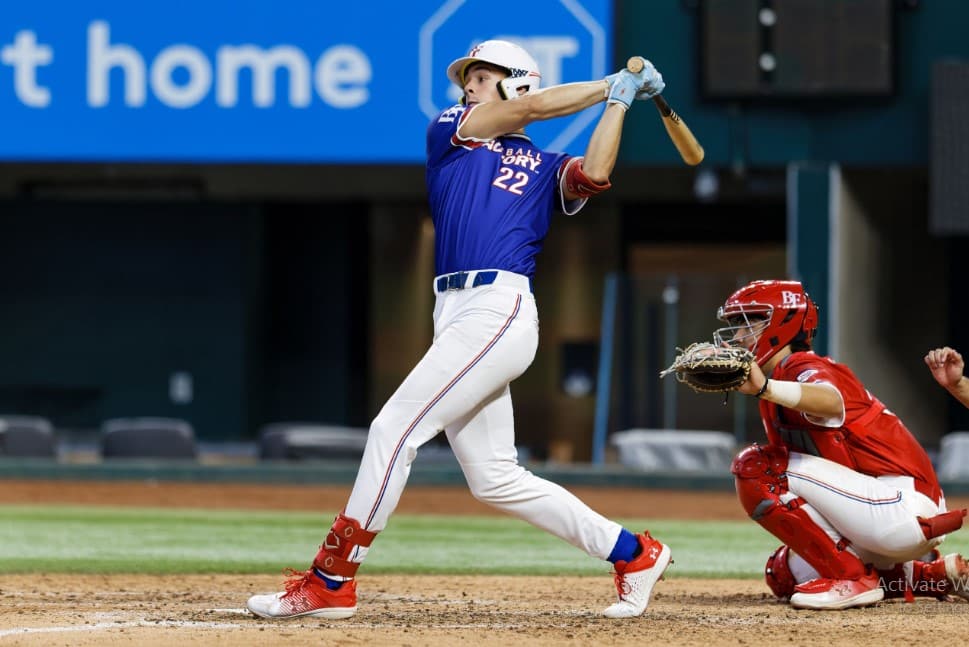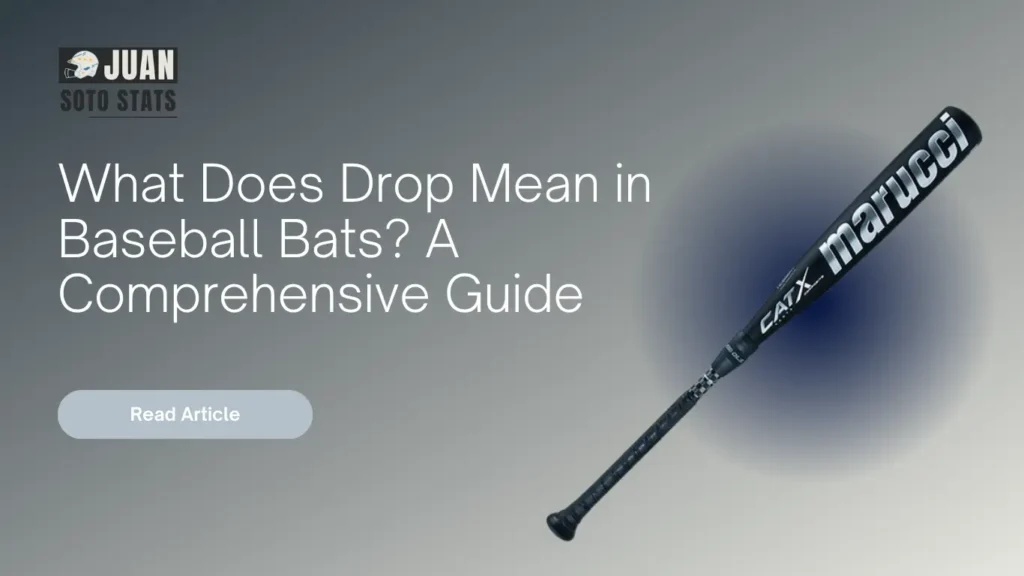How to make a batting order baseball? In baseball, developing a batting order is a strategic chore with major impact on a team’s on-field success. A well-built batting order maximizes the chance for runs and raises the general effectiveness of the offensive action. This page will go over thorough techniques for creating a good batting order so that your team makes best use of its scoring capacity.
Basics of Batting Order
To know the answer of “How to make a batting order baseball?” We should know first that One should first understand the basic idea of a batting order before delving into the details.
The batting order is the arrangement of players’ arrival during a game. This order is significant since it decides which players will face the opposing pitcher and when they’ll get the chance to drive in runs.
The Importance of Batting Order
A well crafted batting order can highlight team strengths and minimize shortcomings. The layout can alter pitcher tactics, momentum of the game, and even defensive posture of the other team.
Key Elements to Consider When Formulating a Batting Order
1. Player Skill Sets
- Examining every player’s skills and shortcomings is essential while deciding the batting order. Here?s how different types of players can fit into your lineup:
- Lead-off Hitter: Often characterized by speed and a high on-base percentage, this player should be adept at getting on base, making them perfect for starting the game with a solid chance to score.
- Power Hitters: Typically positioned in the middle of the order, power hitters are vital for driving in runs. These athletes are frequently distinguished by their ability to hit home runs or accumulate extra-base hits.
- Contact Hitters: Placing contact hitters in the 2-spot can boost the odds of moving runners along the bases. Their expertise in making contact can be vital in advancing base runners.
2. Righty vs. Lefty Matchups
Baseball is a game of matchups. Consider the handedness of both your hitters and opposing pitchers. Placing a mix of right-handed and left-handed batters helps keep the opposing pitcher off balance. For instance:
Lead-off Spot:?A left-handed contact hitter can disturb a right-handed pitcher’s rhythm.
Power Bats:?Pairing right-handed power hitters against lefty pitchers might heighten the possibilities of hitting home runs.
3. Player Consistency and Experience
When analytic data is available, employ it. Players that routinely perform well under duress should be placed higher in the batting order. Experience also plays a factor; veteran players often handle difficult pitching situations more effectively.
Strategic Positioning within the Batting Order
1. Front of the Lineup (1-3 Slots)
- The early slots in the batting order are essential for setting the tone of the game.
- 1st Spot:?As said, this is often a fast guy with high on-base numbers.
- 2nd Spot:?A flexible player who can either advance the lead-off hitter or generate opportunities to score.
- 3rd Spot:?This is frequently where your greatest overall hitter should be positioned to capitalize on any scoring opportunities produced by the top of the order.
2. Middle of the Lineup (4-6 Slots)
The heart of the hierarchy is where players with the biggest power potential shine.
- 4th Spot:?Usually allocated for the “clean-up” hitter, this player?s primary task is to drive in runs and produce an offensive surge.
- 5th and 6th Spots:?These players should also possess power but can include on-base batters to keep the offensive pressure.
3. Bottom of the Lineup (7-9 Slots)
While these players frequently are not the center of the offensive, they can nevertheless have a huge impact on the game.
- 7th Spot: A steady batter who can turn the lineup over and provide chances for the top of the order.
- 8th Spot:?A poorer hitter but one who can still handle pressure and occasionally surprise with a hit.
- 9th Spot:?Typically, a strategic placement for a player who may also function as a second lead-off hitter to contribute to the order.
Evaluating and Adjusting the Batting Order Throughout the Season
To know the answer of “How to make a batting order baseball?” We should know first that A batting order should not be static; rather, it must evolve based on player performance and game situations.
1. Track Player Performance
Keep a close check on how each player is performing in various situations during the season. Update the batting order based on current statistics and matchups versus opposing pitchers.
2. Adapt to Injuries and Changes
Injuries can need a total revision of the lineup. Be prepared to adapt rapidly. Your capacity to do so can preserve team morale and reduce downward spirals in performance.
3. Analyze Specific Game Situations
Baseball provides circumstances where short-term strategy may come into play. For instance, if a certain pitcher has specific flaws, you may want to modify your batting order momentarily to exploit those shortcomings. Tailoring the sequence to meet the game plan can lead to beneficial outcomes.
Common Mistakes to Avoid When Creating a Batting Order
1. Overvaluing Popularity Over Performance
It’s tempting to allow a player?s past accolades or popularity dictate their position in the batting order. However, present performance should always take primacy. Players who may have been stars in the past might not be the ideal fit now.
2. Ignoring Matchups
Neglecting the influence of handedness in the lineup might be counterproductive. Understanding how players perform against right-handed versus left-handed pitchers can turn a solid batting order into a terrific one.
3. Being Static
Sticking to the same batting order throughout the season, regardless of performance or matchup adjustments, is a common problem. Baseball is a dynamic sport, and your lineup should reflect that energy.
Utilizing Data and Advanced Metrics to Optimize Batting Order
In today?s game, the value of data cannot be emphasized. Utilize advanced stats to tweak your batting order further:
1. On-Base Percentage (OBP) and Slugging Percentage (SLG)
These statistics provide insights into how well players are getting on base and their power-hitting talents. Analyzing these stats assists in situating players according to their strengths.
2. Situational Hitting Stats
Examine how players perform in various scenarios (e.g., with runners in scoring position, with two outs, etc.). This data can be essential for finding the most crucial positions in the order.
3. Pitcher-Facing Metrics
Bear in mind how players fare against various sorts of pitchers. Familiarize yourself with metrics such as batting average against various pitchers to make informed judgments for your lineup.
Creating a productive batting order is both an art and a science. It takes a rigorous appraisal of players’ abilities, an awareness of their strengths combined with advanced measurements, and the agility to react to the ever-changing dynamics of the game. Effective order management can dramatically effect a team’s success and ultimately to victory.
By sticking to these rules and consistently refining your strategy, you may position your squad to maximize its scoring potential and succeed on the field.
The Best Batting Order Strategies for Baseball
To know the answer of “How to make a batting order baseball?” We should know first that Crafting the optimum batting order in baseball is a vital feature that can influence a team’s offensive success.
The placement of players in the lineup is more than simply a formality; it may affect the flow of the game, the success against particular pitchers, and ultimately, the possibility of scoring runs.
This essay delves into the most effective batting order techniques, providing a full grasp of how to optimize offensive potential.

Batting Order Fundamentals
The batting order is the sequence in which players take their turns at bat. A deliberately built roster allows teams to utilize their strengths and mitigate shortcomings, facilitating a higher possibility of scoring.
The Role of Player Types in Batting Order
The impact of player profiles cannot be emphasized in designing a successful batting order:
- Speedsters in the Lead-Off Spot: Players with exceptional speed and on-base ability should lead the lineup. They set the tone for the game by turning walks, hits, and mistakes into base running opportunities. Their presence can interrupt the opposing pitcher?s rhythm.
- Power Hitters in the Heart of the Order: Traditionally, the 3-5 places are taken by players noted for their power. These hitters are vital for driving in runs and capitalizing on scoring opportunities created by the lead-off and second hitters.
- Contact Hitters Lower in the Order: Players who excel at making contact but may not have substantial power can be effectively put in the lower third of the order. Their stability can help maintain momentum when the lineup turns over.
Optimal Batting Order Configuration
1. The Top of the Lineup (1-3 Spots)
The first three places are essential for generating early runs and setting a competitive tone.
- 1st Spot: Lead-Off Hitter
- This player should concentrate getting on base, utilizing their speed to create immediate scoring chances. They should ideally have a high on-base percentage (OBP) to ensure they can consistently reach base.
- 2nd Spot: Versatile All-Rounder
- The second batter must possess the ability to move the lead-off guy over while still being a danger to hit. They should be capable of taking pitches and making contact, laying the way for power hitters coming up next.
- 3rd Spot: Best Overall Hitter
- This role is generally awarded to the standout hitter on the team, combining both consistency and power. Their involvement is vital for driving in runs when the table setters complete their responsibilities efficiently.
2. The Heart of the Lineup (4-6 Spots)
This segment is where participants must capitalize on the opportunities created by the top three slots.
- 4th Spot: Clean-Up Hitter
- Placing the strongest power hitter here means that when base runners are available, they have a heightened possibility of scoring. This player should be adept at driving the ball for extra-base hits and home runs.
- 5th and 6th Spots: Consistent Power Producers
- The hitters in these slots should compliment the clean-up hitter, delivering additional power while keeping the capability to get on base. This can further boost run production, increasing pressure on the other team?s pitcher.
3. The Bottom of the Lineup (7-9 Slots)
While often disregarded, the bottom of the order offers the potential to contribute in turning the lineup around.
- 7th Spot: Reliable Contact Hitter
- A solid contact batter can assist build a more comprehensive offensive option for the top of the order on their next turn at bat. They should be capable of producing hits and getting on base.
- 8th Spot: Agile Player with Surprise Potential
- The eighth position can occasionally be used purposefully to provide unpredictability. A player who can bunts well or has decent speed might generate unexpected scoring opportunities.
- 9th Spot: Second Lead-Off
- The order rounds off with a guy who can serve as a second lead-off batter. They should ideally have speed and contact capabilities, allowing them to set the stage for the top of the order.
Analyzing Pitcher Matchups
1. Assessing Righty vs. Lefty Matchups
Understanding the relationship between left-handed and right-handed hitters and pitchers can dramatically alter how a lineup works.
Left-Handed Pitchers: Conversely, right-handed batters struggle less against left-handed pitchers. A well-mixed batting order with the balance of left and right can keep the opposing pitcher nervous.
Right-Handed Pitchers: Generally, left-handed batters will perform better against right-handed pitchers due to their ability to view the ball better from a right-handed perspective. Placing lefties strategically in the lineup against righty pitchers helps enhance scoring chances.
Dynamic Adjustments During the Season
1. Tracking Player Performance Metrics
To know the answer of “How to make a batting order baseball?” We should know first that Throughout the season, tracking the performance of each player is vital for success. Regular assessments based on variables such as batting average (AVG), on-base percentage (OBP), and slugging percentage (SLG) will assist adjust the batting order.
- Hot Streaks: When players are on a hot run, it may be useful to bump them up the order to capitalize on their performance. This versatility can boost scoring opportunities.
- Slumping Players: Conversely, players who are suffering may need to be placed lower in the order or given respite to regain their confidence and form.
2. Injury Impact and Lineup Adjustments
Injuries are an inherent feature of baseball. Reassessing the batting order following an injury is vital:
- Injured Star Players: If a star player is sidelined, other players may need to step up in performance. Adjusting the batting order to accommodate these adjustments can assist preserve offensive production.
- Depth on the Roster: Utilizing bench players effectively allows that compensatory adjustments may be made without entirely disturbing the flow of the batting order.
Conclusion
To know the answer of “How to make a batting order baseball?” We should know first that The creation of a strong batting order is crucial for baseball success. By knowing individual strengths, using matchups, and regularly reviewing performance indicators, clubs can maximize their offensive powers.
Balancing analytics with traditional baseball understanding helps coaches and managers to design a dynamic and successful batting order that can develop throughout the season.



